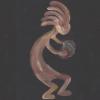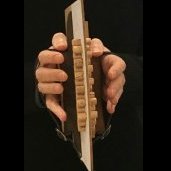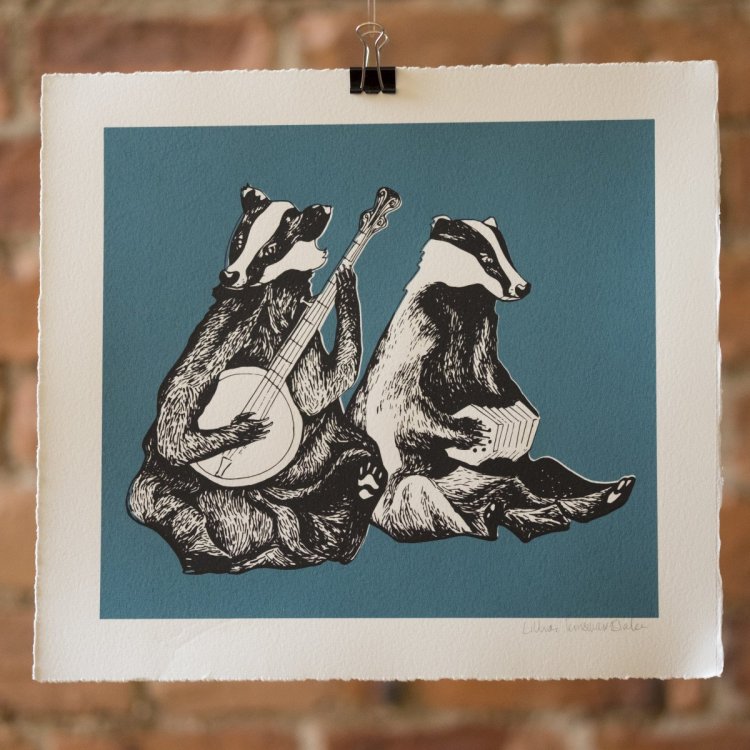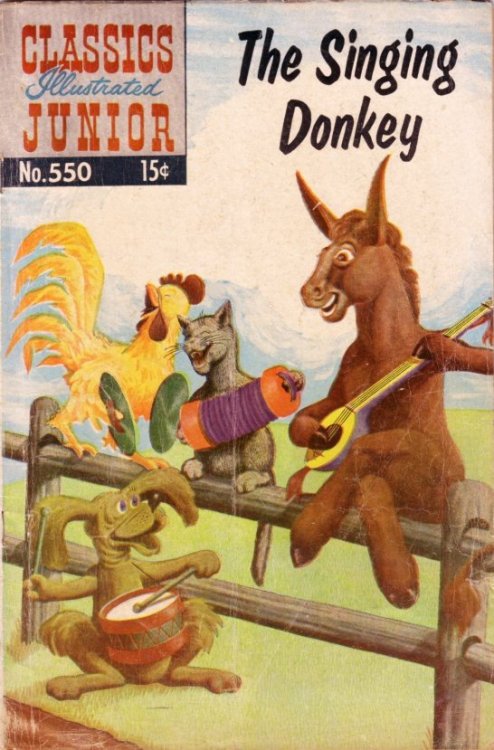-
Posts
308 -
Joined
About Stephen Mills
- Birthday 08/16/1949
Contact Methods
-
Website URL
http://
-
ICQ
0
Profile Information
-
Gender
Male
-
Interests
I have played classical guitar since the mid-70's. I dabbled in anglo and English concertina for a couple of years before receiving a Tedrow Hayden duet in Aug 2005. Now I spend my time only on the Hayden, mostly folk and jazz tunes, and in trying to keep my classical guitar pieces alive and improve my jazz guitar. I am also fond of playing abstract board games with whichever daughter will humor me.
Update: Retired 1/1/2020 and relocated back to the Rockies, where my heart lies. I haven't been playing much the past few years, but hope to resume. -
Location
Boise, ID, USA
Recent Profile Visitors
1,343 profile views
Stephen Mills's Achievements

Chatty concertinist (4/6)
-
I agree completely, David - a sloppily worded post. I inadvertently dropped the word Bay after Lady Franklin, which I never intended to be taken as the name of the ship, but the expedition. While the expedition was said to be named for Franklin's wife, who tirelessly worked to advance searches for her husband's expedition, the purpose was to search for Jeannette survivors. While I was troubled by the large number of years passed since the original expedition, I indeed missed that that they were in fact looking for survivors from the Jeannette, as you stated.
-
It is said that there was a concertina on the later "Lady Franklin" or Greely expedition to search for survivors of the Franklin expedition. https://time.com/5752551/christmas-dinner-north-pole-1881/ On Christmas Day 1881, "The first Thanksgiving menu was extravagant... During the meal, prizes were distributed to the winners of the day’s events, and the evening concluded with concertina and violin music and singing." - from Labyrinth of Ice: The Triumphant and Tragic Greely Polar Expedition by Buddy Levy.
-

1960s Popularity of the Concertina in the USA
Stephen Mills replied to Sean M's topic in General Concertina Discussion
Your post inspired me to search briefly through newspapers of a half dozen U.S. States for occurrences of the word "concertina". The site for some reason stopped at 1963. As Stephen intimated, references declined 1910 to 1963. I did not search New York. Most were in classified ads (a used Wheatstone English seemed to go for 50-100 USD in 1960 in Texas or D.C.). Three arbitrarily chosen images are attached for your amusement/bemusement/demusement. -
The artist is Lillias Kinsman-Blake of Glasgow. The print is called Dueling Badgers. link to Dueling Badgers https://www.artworkarchive.com/profile/lillias-kinsman-blake/artwork/dueling-badgers link to some of her other artwork https://kinsmanblakegallery.co.uk/lilliasandthelion link to some of her music (on flute - sometimes in a group with Alistair Anderson) https://mainlynorfolk.info/folk/records/lilliaskinsmanblake.html
-
-

Concertinas In Literature
Stephen Mills replied to John Wild's topic in General Concertina Discussion
The Concertinas in Art thread has brought back to my mind the Concertinas in Literature thread, which has had no entries in a while. The great bulk of the cited references were unsurprisingly from older periods when concertinas were more generally extant. My 2 contributions to this point were: Jamrach's Menagerie (2011), a sailing tale from the nineteenth century, and The Penal Colony (1987, but set in some near future). I read roughly 60 books a year and my concertina "awareness" began when I got my first concertina in 2003. So that's about 2 books with concertina references in ~1080 books read, or about 0.2% of my book input. Unsurprising, really. So what is surprising is that this year I have read 3 books with concertina references, in fact 3 out of the last 10 novels I have read, all by writers of at least some note (and great skill, IMO). These are: (1) A Good Man, a Canadian-American western by Guy Vanderhaeghe ("One of North America's Best Writers" proclaims Annie Proulx on the cover.) "Every third false-fronted establishment is a saloon blaring a fearsome hubbub - the wheeze of concertinas the jangle of pianos, the squeals of hurdy-gurdy girls, the whoops and curse of roustabouts, mule skinners, and bullwhackers." In an earlier book I have not read, The Englishman's Boy, Vanderhaeghe has the sentence: "Three men saw soundless fiddles, a boy twangs a slient jew's harp, a mute concertina snakes back and forth between hands. And in We're All Right (also not read by me), he writes: "One young fellow, a beanpole in wire-rimmed spectacles working a concertina for all it was worth, pumping out Hold the Fort, had a grin that proclaimed unadulterated joy." "Gilchrist turned and saw two young men sitting on wooden egg crates. He recognized the concertina player he had seen coming down Halifax by his smile, a grin as wide as the poles asunder. “Beg pardon?” said the Reverend. ... The concertina player said, “This here is Lionel Gibb. I’m Tony Fleck.” So I contacted Mr. Vanderhaege, faculty member at the University of Saskatchewan, asking if he were a player and if he had a specific system in mind when he was writing about them. His kind reply was: ” To be truthful, I know almost nothing about concertinas. My only connection with them was that my mother-in-law had one and used to play it. My wife, who was a painter, painted a picture of it sitting on a chair. As to the type of concertina I had in mind, I was unaware that there was any great range in varieties. What I envisioned was what my mother-in-law played and that was it. " (2) Simon the Fiddler by Paulette Jiles. This is set as the Civil War has ended and contains a few of the characters in her New York TImes Notable Book "The News of the World" (which I also read and recommend - no concertina references, though). Simon the Fiddler had 5 concertina references, which began rather neutrally and gradually turn less favorable. "They listened to a badly-tuned banjo and a concertina, not great but the duo had volume. they walked on." "Mules steadily ground corn kernels between their square heavy teeth and somebody tried to make sense of a concertina. That person started a tune and then stopped, started again, trying to find a way into the melody, off-notes, flat notes, then back again into the only phrases the player knew for sure, over and over. Simon pressed both hands over his ears." "From somewhere he heard a concertina playing a tune whose name he did not know, and a woman's laughter." "And then some other girl wanted to play piano and someone had, against all reason, brought a concertina and made the afternoon hideous with its noise, and so the moment passed." "And now [said Simon], I am in love with a young woman of his household, who is sitting outside this room pretending to be entranced by a Goddamned concertina." Ms. Jiles is a writer in her '70s living near San Antonio, Texas. Her email address was not readily available. Her blog suggests she plays low and regular D whistles with a local group of friends. Dan Worrall, maybe you should collect her up some day, take her and her whistles to the Palestine festival and improve her opinion of concertinas. (3) Most recently, there is a concertina reference in the Haruki Murakami novel 1Q84 (2013). One of the protagonists is reading a book on the train about visiting a town of all cats. The cats, among other activities, "drink beer at the tavern and sing lively cat songs. One plays a concertina and other dance to the music." Things eventually take a sinister turn as the cats detect the aroma of a human and try to track him down. Sorry for the lengthy post. So that's my What's New in Concertinas in Literature update, probably for the next 7 or so years. -

Anglo printed music - real pitch or octave low?
Stephen Mills replied to gcoover's topic in Teaching and Learning
I presume the preferences of Anglo players is indeed a distribution based on experience rather than theoretical concerns. For example, after 40 years of playing from classical guitar scores, I am comfortable playing Anglo while reading a single treble clef (across the limits of the guitar fretboard - I do have a slight hesitation on encountering even higher notes on the Anglo which take a couple of times through to hone in on). With either of the other 2 notations (especially with bass clef), I often find myself using a pencil converting them to the single treble clef notation. Players with prior experience on piano or other instruments would probably have different preferences. So my preference is different from the two much better Anglo players you mention. -
It's hampered perhaps by considerable dissonance and a failure to resolve.
-
I was living in Houston, TX (~85% humidity) when I bought my Hayden duet in 2008. In the winters, such as they were, the house humidity would drop to about 45% and a couple of reeds would start to squawk. I solved this by putting wet paper towels in a small open yogurt container in my case. I now live in Boise, ID (~45% humidity). Many more reeds complain much more squawkily. The small humidifier in the case solution no longer works. I put my concertina in a standard cooler chest with a open beaker of water. Humidity climbed to 83%, and there was discernible improvement, but not nearly enough to have a playable instrument. Problems are usually worse on the draw than the pull. I have given the instrument at least 2 weeks to adjust to the closed 83% environment. I have read the many humidity threads, but I think I may have come to the end of personal solutions. What sort of internal modifications are likely to be needed to restore order? Does something need to be done to the reed pans? (I haven't come across my Dave Elliot repair book since the move.)
-
It was nice to come across this. Although I haven't been very active on concertina lately, the last things I avidly attacked a few years ago were saltarelli and estampies, by means of which I became acquainted with several of Zoltan's videos. I played this one in particular: https://www.youtube.com/watch?v=qgZp9DoW3CY that allowed for lots of harmonic choices in a medieval style, to my mind. (I play a Hayden duet.) edit: and finally found the other Zoltan saltarello I played: https://www.youtube.com/watch?v=e8aQm3SoyI4
-
John, there was a talented multiinstrumentalist named Aldon Sanders who posted occasionally many years ago. One of his tunes, the Orange Rogue, was on Henk van Aalten's Recorded Tunes Page. You can still access some of those tunes with the Wayback Machine, but Aldon's link is dead. It can be downloaded here as an .asx file, which can be played with Windows Media Player. Aldon played it on English concertina and pennywhistle, so all you need to do is break out your banjo and it's then all in your hands.
-
-
My 52 button Tedrow Hayden spans the range from a low C to the D above the C 3 octaves higher, with a full octave of overlap between the sides. On the relatively few occasions I tackled baroque pieces with 4 part polyphony, I found that it was usually much easier to finger and make the voices flow when I fingered 2 buttons on the left side and 2 buttons on the right (though not always possible). If you depress 3 buttons on one side, some difficult positions arise and further, when one note moves and the other 2 stay, you often have to refinger all 3 buttons to continue the melody – not ideal ergonomically or musically. So that’s another virtue of overlap.
-

Book On Matusewitch Family
Stephen Mills replied to ematuse's topic in General Concertina Discussion
You might ask advice of Allan Atlas, a musicologist at CUNY who plays and has written about the English concertina. He hasn't posted here in about 5 years, but appears to be still active as an academician. See: http://www.gc.cuny.edu/Page-Elements/Academics-Research-Centers-Initiatives/Doctoral-Programs/Music-%28Ph-D-D-M-A-%29/Faculty-Bios/Allan-W--Atlas. Edited to add: I see now that Allan was a student of Boris's and dedicated his book on the English concertina to him, so I imagine you are well aware of him.










